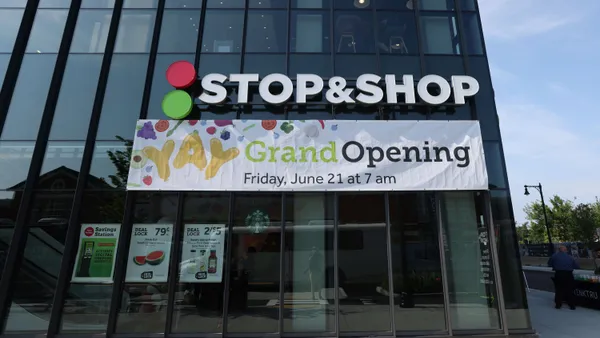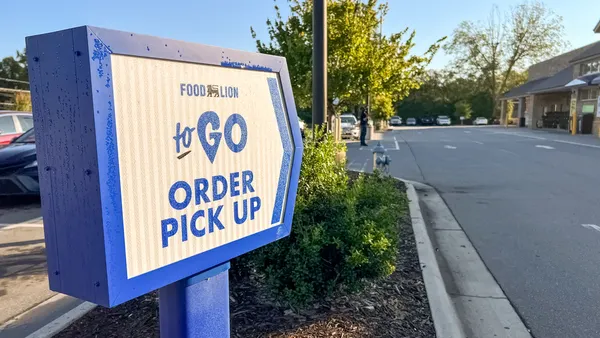Dive Brief:
- Many grocers are updating their stores to make e-commerce faster and more efficient, according to The Wall Street Journal. Smart & Final recently replaced snack aisles at the front of its stores with freezers, which will hold online orders for pickup. Walmart and Kroger are investing millions of dollars in e-commerce technology, home delivery and store pickup. Other stores are designating special parking spaces for online order pickup and special checkout lines.
- But these changes could impact the in-store experience, according to the publication. Growing pains include congestion in the aisles with designated shoppers selecting products alongside in-store shoppers, and inventory issues to meet the needs of all customers.
- Although e-commerce makes up only 5% of U.S. grocery sales, Forrester Analytics predicts that the U.S. online grocery market will total $36.5 billion by 2022, up from about $26.7 billion this year.
Dive Insight:
Grocers are scrambling to expand their online offerings to stay competitive with online behemoth Amazon as well as Walmart and other large retailers that are making waves in e-commerce. While many of these changes will help increase online sales and create a better experience for the online shopper, they also risk diminishing the in-store experience for brick-and-mortar consumers, which are still the biggest source of grocery sales.
The primary transformation at the physical store is front-of-store redesign to accommodate online order pickup. In addition to Smart & Final’s recent changes, there are an increasing number of pickup lockers, towers and kiosks at grocers nationwide. Even more dramatic, Giant recently announced that it would transform an entire store to serve as a hub for Peapod, which the grocer partners with for online grocery delivery.
Online pickup areas actually provide a major opportunity for retailers and suppliers of snack items and similar impulse buys that could otherwise suffer from the lost footprint. While shoppers picking up purchases may only set foot in the store for a few minutes, they are still showing up – and retailers can try creative displays or unique experiences to drive extra purchases. The Wall Street Journal also reported that brands such as Hershey’s, which has prioritized e-commerce, are paying for additional promotions online to keep selling to shoppers who will no longer walk by their products at checkout.
Inventory seems to be one of the biggest issues with online shopping. The Grocery Manufacturers Association found that out-of-stock rates for online orders is about 15%, almost double that of in-store figures. About 70% of shoppers will switch to another brand or store, or stop their order completely, if they don’t find the items they want immediately. The Wall Street Journal notes that grocers have also found that bulk items are better for online orders, while shoppers in-store may not have the same demands. Additionally, grocers are going to have to maintain both products on shelves in the store as well as back inventory, which is how they fulfill online orders.
An added complexity is the impact of online orders through third-party services such as Shipt or Instacart, where paid shoppers are walking the aisles and looking for the best produce and products available. Instacart is trying to minimize the effects on in-store shoppers, running staging areas in grocery store backrooms and using dedicated checkout lanes.
It will take time for grocers to work out the kinks in the system as online shopping grows and evolves. As the processes become more sophisticated, online order fulfillment — and grocery stores themselves – will likely look quite different in the future.













